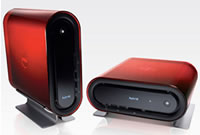Green Computers Save Energy and Cut Waste

More Articles
- Green Homes: A Bright Spot in the Housing Market
- Geoexchange Systems Provide Energy - Efficient Heating and Cooling
- Rebates - Free Money for Your Efficiency Projects
- Is Your Home Leaking Money?
- Don't Let Your Fireplace Burn a Hole in Your Wallet
- Families Compete to Save Energy in "Energy Smackdown"
- Making Solar Easy - New Options for Homeowners
- Recycle - Save Energy, Resources and the Environment
- Standby Power - The Silent Energy Drain
- The Fast and Easy Way to Cut Your CO2 Emissions
- The Fight Against Global Warming Comes Home
- Big Screens Mean Big Energy Bills
- Save Energy at the Tap
Consumers in the U.S. and around the globe are demanding greener electronics, and the personal computer industry is responding with new products that save energy, save money and cut waste. Studies have found that 12% of U.S. adults are willing to pay extra for electronics that use less energy or are made by an environmentally friendly company. The industry is taking several paths toward greening the PCs we use every day.
Saving energy is a top priority, and many companies are working on both hardware and software solutions that increase energy efficiency. Dell Inc.'s new Studio Hybrid desktop uses up to 70% less power than a typical desktop unit. Intel Corp. has recently introduced new chips that increase power without using additional energy. Intel has also developed a new technology called Remote Wake that keeps computers in low-energy mode until users need them to retrieve files. Companies such as Hewlett-Packard have made efficiency progress with peripherals such as printers that quickly power up from sleep mode when needed.
Companies are also trying to reduce the raw materials used in manufacturing by incorporating recycled plastics into their products. Lenovo has incorporated 10% to 25% recycled plastics from water bottles into their new ThinkPad laptops.
Other companies, such as manufacturers Apple and Dell, and retailers Best Buy and Circuit City, have instituted programs to take back old PCs to ensure proper recycling.
This new technology is leading the way toward energy efficiency, but the best ways to reduce the impact of your PC and save money are to plug computers, monitors and printers into a power strip and turn them off when not in use, and to hold on to a still-efficient PC as long as possible.










